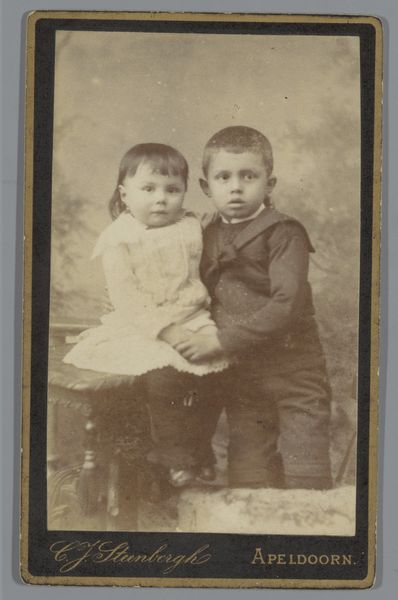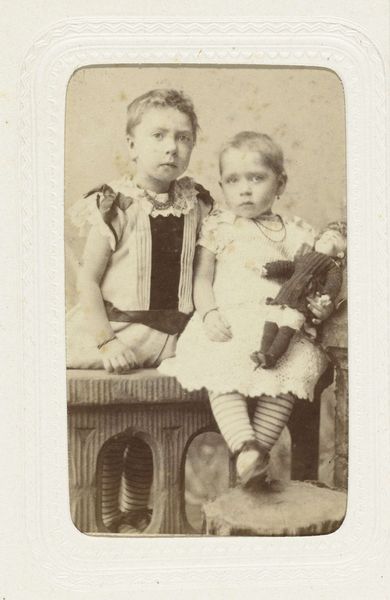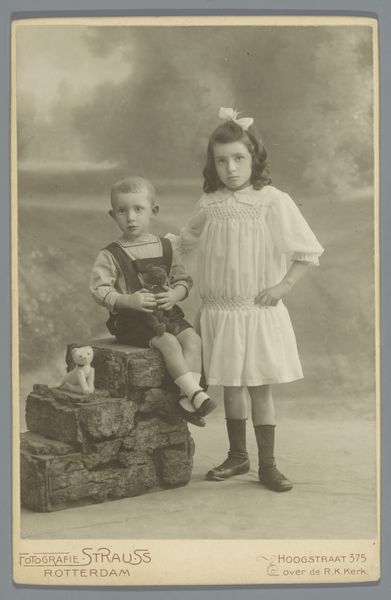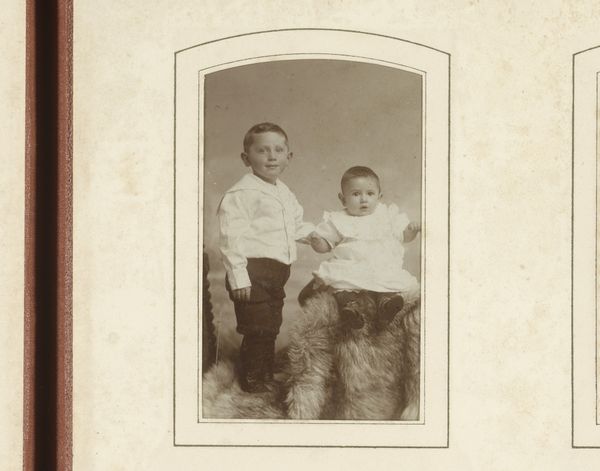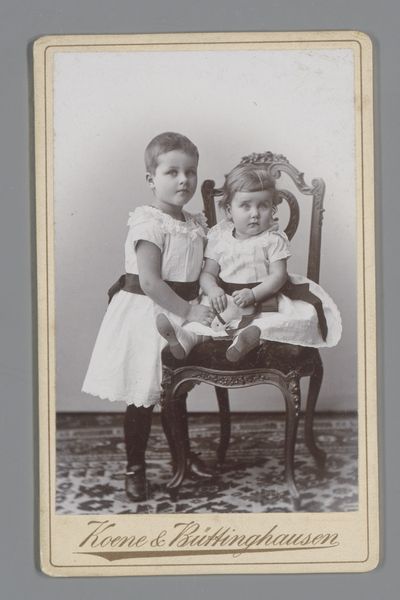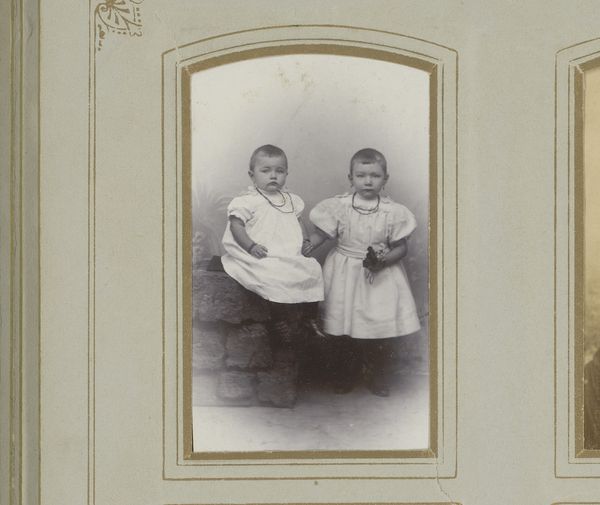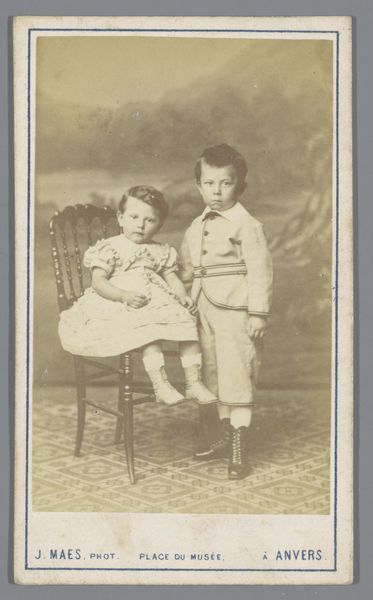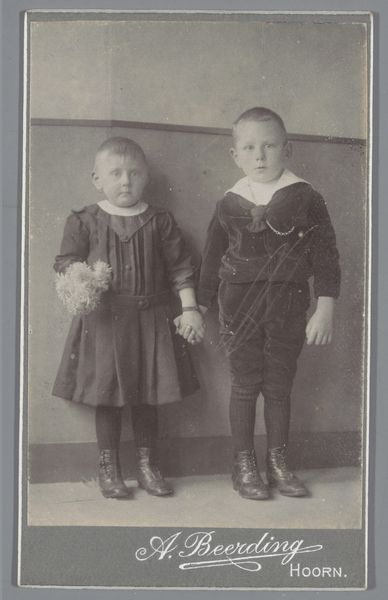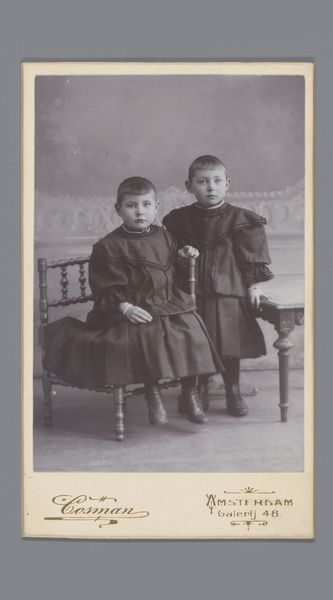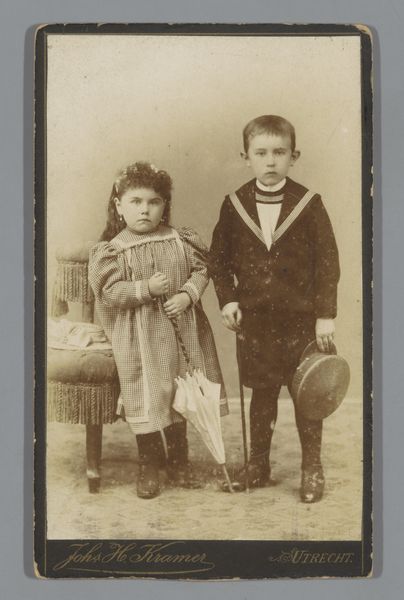
photography, gelatin-silver-print
#
portrait
#
archive photography
#
photography
#
historical photography
#
framed image
#
gelatin-silver-print
#
19th century
#
ashcan-school
Dimensions: height 165 mm, width 105 mm
Copyright: Rijks Museum: Open Domain
Curator: This gelatin silver print is one of several "Photographs from the Estate of Isabel Wachenheimer" dating between 1891 and 1896, by Anton Hruschka. Editor: Oh, my heart! They look like tiny, serious diplomats. So much gravity packed into those little faces, it's almost comical. Curator: The composition is typical for late 19th century portraiture. Note the painted backdrop simulating an outdoor garden scene, juxtaposed with the staged iron railing the children are posed upon. The lighting seems carefully calibrated to enhance their features and clothing. Editor: Absolutely. But, oh, look at their clothes! The girl's frilly dress and the boy’s sailor suit, all those buttons and little boots. I bet they itched like crazy, especially in the summertime. Do you think they knew each other, were siblings, or cousins maybe? Their expressions suggest an alliance against the ordeal of posing, perhaps. Curator: One can't know their relationship with certainty from the photograph, but it serves as an artifact of a specific socio-economic class at that time. This visual style communicates propriety, and social status is presented and maintained through its aesthetics and material production. Editor: Hmm, social status wrapped up in stiff collars and forced smiles. Even though it's staged and constructed for the sake of visual culture, that underlying sense of discomfort makes them somehow more alive, you know? What happened to them? What did they dream of beyond that photographer's studio in Strasbourg? It tickles the brain, the endless potential stories behind this moment frozen in silver. Curator: Indeed, the photograph functions on multiple levels. Its surface rigidity reveals undercurrents of vulnerability. And as a document, it invites us to project narratives upon these figures extracted from their historical setting. Editor: Yeah, sometimes the most ordinary old pictures end up feeling the most extraordinary, whispering little secrets from a world that’s completely vanished. Curator: It prompts contemplation regarding the constructed nature of identity. And the silent dialogue continues across eras through visual engagement.
Comments
rijksmuseum about 2 years ago
⋮
The German Eugen Wachenheimer had a brilliant career at the Deutsche Bank and served as a naval officer in the First World War. In 1922 he married Else Moos. The Anti-Jewish laws instituted by the Nazi regime forced them to flee to the Netherlands in 1937. The photograph at the lower right is the last one taken of Eugen. He stands with his back to the camera behind his daughter. Eugen and Else were gassed at Auschwitz-Birkenau in 1944.
Join the conversation
Join millions of artists and users on Artera today and experience the ultimate creative platform.
